Audemars Piguet Reimagines the Chronograph with the Royal Oak Jumbo Chronograph RD#5 (Incl. Video)
The chronograph interface reimagined, and housed in an Extra-Thin Royal Oak Jumbo case.
The chronograph is undoubtedly one of the most, if not the most, popular complications among watch enthusiasts. However, few people realise that this mechanism is one of the most complex in watchmaking. Most chronographs operate on the same fundamental principles. However, with the Royal Oak Jumbo Chronograph RD#5, Audemars Piguet dares to challenge conventions that have stood unshaken for decades… “To break the rules, you must first master them”, was once the brand’s motto. And it is exactly what this new RD#5 is all about.
The Audemars Piguet RD# Series
As its name suggests, this new Royal Oak RD#5 is the latest opus of a very special saga, the Audemars Piguet RD series. With this collection of cutting-edge concept watches, AP experiments with advanced materials, radical engineering, and new horological complications.
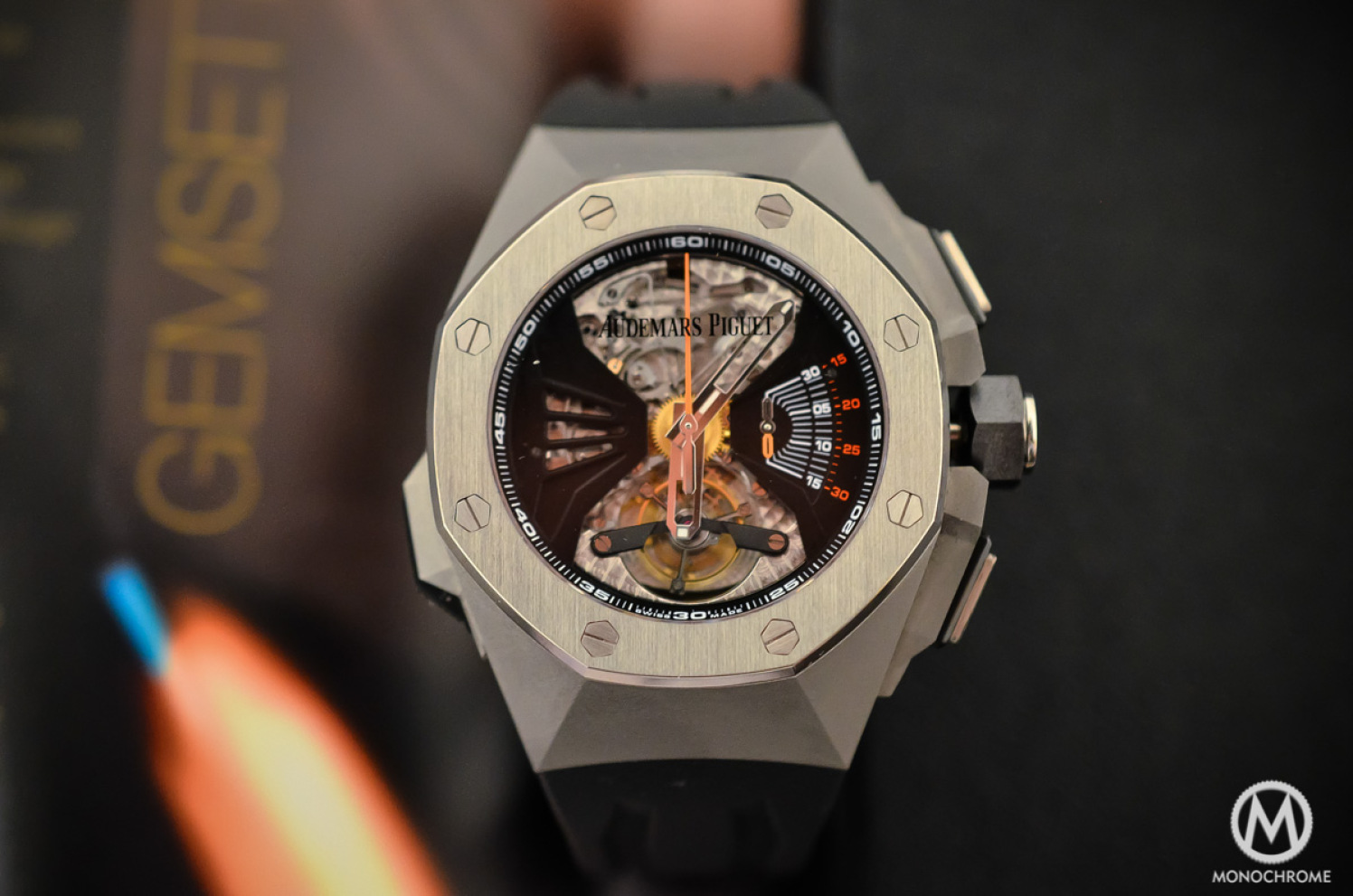
In 2015, the Royal Oak Concept RD#1 focused on acoustic innovation with the SupersSonnerie concept. In 2018, with the Royal Oak RD#2 Perpetual Calendar Ultra-Thin, the brand re-engineered the perpetual calendar into a single-layer complication. In 2022, the Royal Oak RD#3 fitted a flying Tourbillon and an increased amplitude oscillator in the RO Jumbo proportions. In 2023, the Audemars Piguet Universelle RD#4 combined 40 functions, including 23 complications and 17 technical devices.

These RD concepts are mechanical testbeds that shape AP’s future watchmaking. Today, as the brand celebrates its 150th anniversary, it unveils a fascinating take on the chronograph that is, once again, packed with innovations and breaking conventions.
The Royal Oak Jumbo Extra-Thin Chronograph RD#5
The Royal Oak Jumbo Flying Tourbillon Chronograph Automatic Extra-thin RD#5 combines a flying tourbillon regulator and a flyback chronograph into the current Royal Oak Jumbo 16202ST proportions, without altering thickness or silhouette (39mmx 8.1mm). It is crafted from titanium and innovative Bulk Metallic Glass to offer a balance of lightness, durability and brilliance. The watch is simply superb, and thanks to its finesse and lightweight materials, it is supremely comfortable. That’s already a feat, but there is more. Primarily, this new reference, 26545XT, rewrites the interface of a chronograph for enhanced and natural interaction. And it also comes with a new coupling mechanism.
As explained in the AP chronicles, Bulk Metallic Glass (BMG) is a remarkable material that combines extreme hardness with surprising elasticity. Unlike traditional metals, its unique properties depend less on the alloy composition than on the way it is manufactured. In the 1960s, researchers discovered that rapidly cooling molten metal prevented its atoms from arranging into their usual crystalline structure. Instead, they “froze” in a disordered state, similar to the structure of glass. The result was a metal with an amorphous, glass-like internal architecture – hence the name.
For watchmaking, BMG offers major advantages: its surface is so hard that it is nearly scratch-proof, and its elasticity allows cases to absorb minor shocks and instantly recover their shape. First introduced in watchmaking by Omega or Panerai, BMG has since evolved into different variations. In 2021, Audemars Piguet pioneered the first BMG alloy based on precious metals. Enriched with palladium, this version offers exceptional resistance to wear and corrosion, along with a distinctive brilliance. While visually similar to platinum, it is both lighter and stronger.
The technical details
“From the outset, the #RD5 project was led by a desire to create a chronograph that offers an elevated level of comfort. Its development was guided by a comprehensive ergonomic study – encompassing the movement, case and design – to identify user expectations and create tailored solutions to meet them.”
The set of functional specifications that was given to the Audemars Piguet R&D team was to offer unprecedented ergonomics, user experience, and interaction:
- First, the idea was to keep the proportions of the Royal Oak Jumbo case (39mm x 8.1mm), but for a chronograph with a flying tourbillon
- Secondly, the watch should feature a function selector. This led to the development of a push-piece coaxial to the crown. It drives a dedicated column wheel, allowing for switching between winding and time-setting modes. In an original way, there is no indication of the function on the dial. Instead, the mode can be checked directly with the two positions of the pusher, with a red ring appearing in time setting mode. Overall, the solution is more intuitive and more ergonomic than pulling out a crown.
- Last and most importantly, the pushers should offer a unique tactile interaction, with a click like a smartphone. The RD#5 requires 10 to 25 times less pressure to operate. The pushers engage with shorter travel, delivering a crisper, faster tactile response with no wasted motion.
The design of the RD#5 and its enhanced tactile interaction involved a profound re-engineering of its movement.
The heart-shaped cam
Let’s first take a look at how chronographs reset… until today. The vast majority of chronographs (the remarkable Agengraph being a notable exception) rely on the same principle, the heart-shaped cam.
Where the heart cam is: Each chronograph hand (seconds, minutes, hours if present) is mounted on a wheel. On each wheel’s arbour, there’s a heart-shaped cam.
What the heart cam does: The heart cam’s special asymmetrical shape ensures that, regardless of where the wheel is stopped, when a reset hammer presses on it, the cam always returns to the same reference point. That reference point corresponds to the zero (12 o’clock) position of the chronograph hand. When you push the reset pusher, the reset hammer falls onto the heart cam(s) because of the cam’s geometry. This pressure forces the wheel to rotate on the shortest path until the cam’s flat side aligns under the hammer.
As we have seen, a hammer typically drops onto heart-shaped cams, instantly rotating the hands back to zero by forcing the cams into their fixed starting position. If this is an efficient solution, one drawback is that it requires quite some energy, given the specific shape of these cams and the tension in the mechanism. So, the user experience is not optimal. In short, the pushers on a chronograph case are often stiff and hard to push.
New Kinetics for the chronograph
In the RD#5, AP has implemented an innovative set of rack and pinions that drive the chronograph’s kinetic chain, allowing the chronograph’s mobiles to be reset and ensuring the anti-shudder function. The idea is to accumulate energy and to use it to reset the hands. This makes the function incomparably sharp and smooth. The user simply releases energy that has been stored, rather than generating it. This makes the tactile interaction unique. It is a true pleasure, plus it feels extremely reactive and precise.
The reset operation is solely based on this retrograde mechanism. Therefore, to make sure that it is fast enough, the inertia had to be reduced with a chronograph second wheel and second hand in titanium.
You may wonder what happens after one minute. The pinion has a special toothing allowing the rack to disconnect and flip back to its zero position every minute. Simultaneously, the chronograph second rack mechanism drives the chronograph minutes mechanism, which is based on a similar principle, allowing for the instantaneous jump of the chronograph minutes. Thus, the energy stored in the rack during each minute is also used when it falls back to instantly increment the minute counter, which in turn gradually drives the hour counter.
As far as the reset mechanism is concerned, driven by an all-or-nothing mechanism that produces a crisp click, a single piece releases all racks simultaneously to reset the hours, minutes and seconds. The start and stop operations rely on a column wheel that engages or disengages the clutch while simultaneously driving a brake off or on the mechanism.
The new Calibre 8100
All of that is already fairly impressive, to say the least. But there is more. The calibre 8100 of the Royal Oak Jumbo Chronograph RD#5 also includes a novel clutch mechanism. The idea was to combine the benefits of a horizontal and a vertical friction clutch. The coupling of the chronograph is therefore performed with toothed wheels and not by friction as in a vertical clutch. Yet, the connection is vertical and not horizontal. The specific oblique profile of the wheels’ teeth ensures a perfect, immediate connection. In comparison with a vertical clutch, this solution ensures a much more compact mechanism, which was essential given the watch proportions.
As for the movement itself, Audemars Piguet has developed its architecture to fit inside a case with an 8.1mm profile, or the actual proportions of a time-and-date Royal Oak Jumbo 16202ST. To achieve this, the brand has used the mechanical base of the RD#3 concept for the tourbillon. Among other highlights, we can also mention the winding mechanism that uses a peripheral rotor. The chronograph mechanism is completely built inside the diameter of its rotor. This allows for a thinner movement, and it simply looks stunning as all the parts forming the chronograph movement are visible in full display.
Quintessentially Royal Oak Jumbo
Besides the thinness of the movement, Audemars Piguet has worked on the construction of the case of this Royal Oak RD#5. In particular, two box sapphire crystals are used, one on the front and one at the back of the watch, different from the flat sapphire crystals used in the traditional RO Jumbo case.
Altogether, the watch is absolutely gorgeous. Besides the compelling architecture of the movement, it uses classic Royal Oak codes with a Bleu Nuit, Nuage 50 dial with petite tapisserie pattern – a classic for the collection since 1972. The unusual font of the Audemars Piguet logo is inspired by an archival design and brings an original touch. The chronograph counters are slightly offset to the upper part of the dial, allowing for large diameters while ensuring a harmonious layout. And as you have come to expect from Audemars Piguet, the finishing is spectacular throughout.
The mechanical principles behind the RD#5 are not entirely new, but they are applied in a completely unprecedented way. To draw an analogy with music: the notes are familiar, but the music we hear is entirely different. The development required 5 years, and a patent was filed. Congratulations to the AP development team for bringing this fascinating watch to life. And as always with the Audemars Piguet RD series, you can expect these new technical solutions to be used in future AP models, so stay tuned!
The Audemars Piguet Royal Oak Jumbo Extra-Thin Selfwinding Flying Tourbillon Chronograph RD#5 150th Anniversary 39mm reference 26545XT.OO.1240XT.01 is released in a limited edition of 150 pieces. It is priced at CHF 260,000. For more details, please visit audemarspiguet.com.

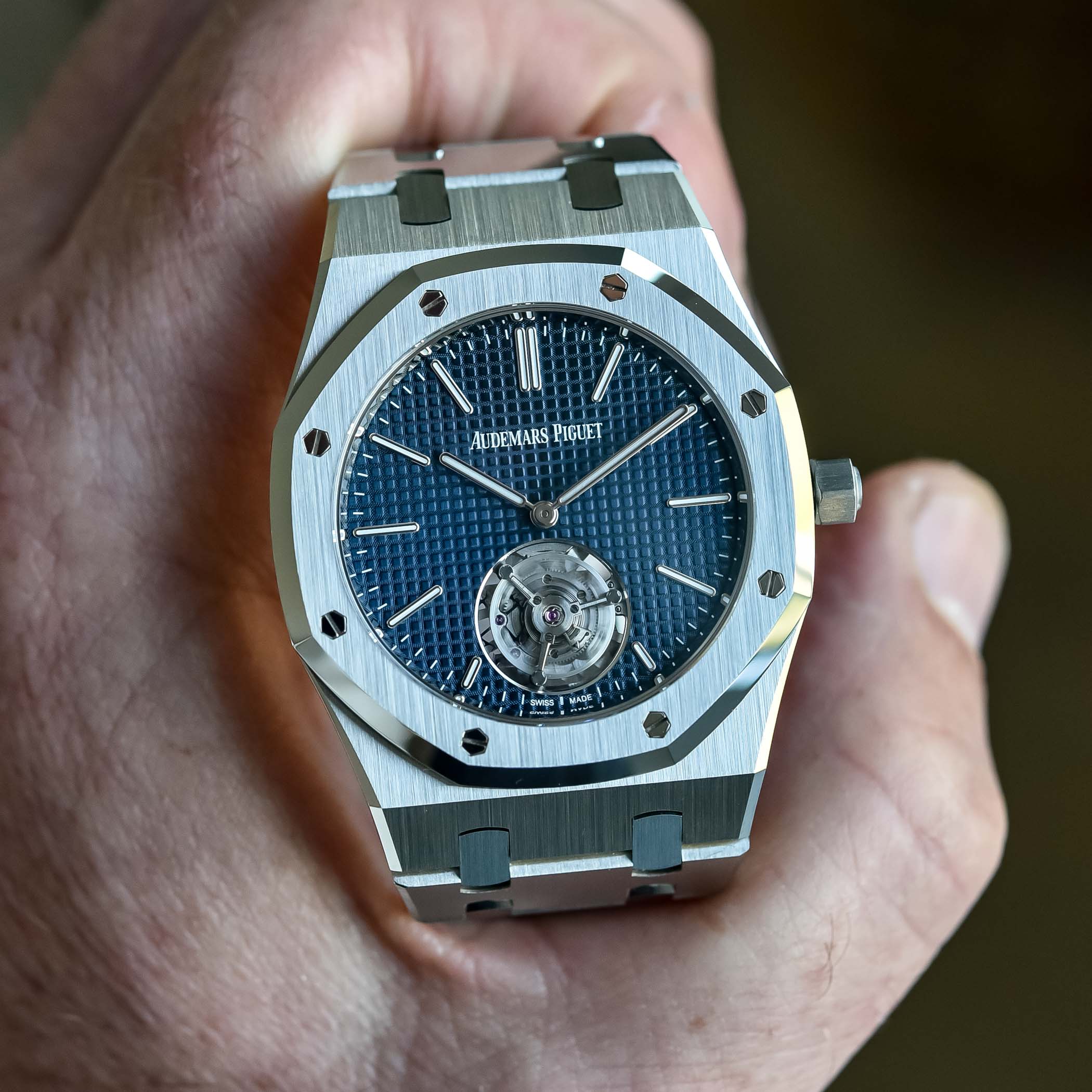
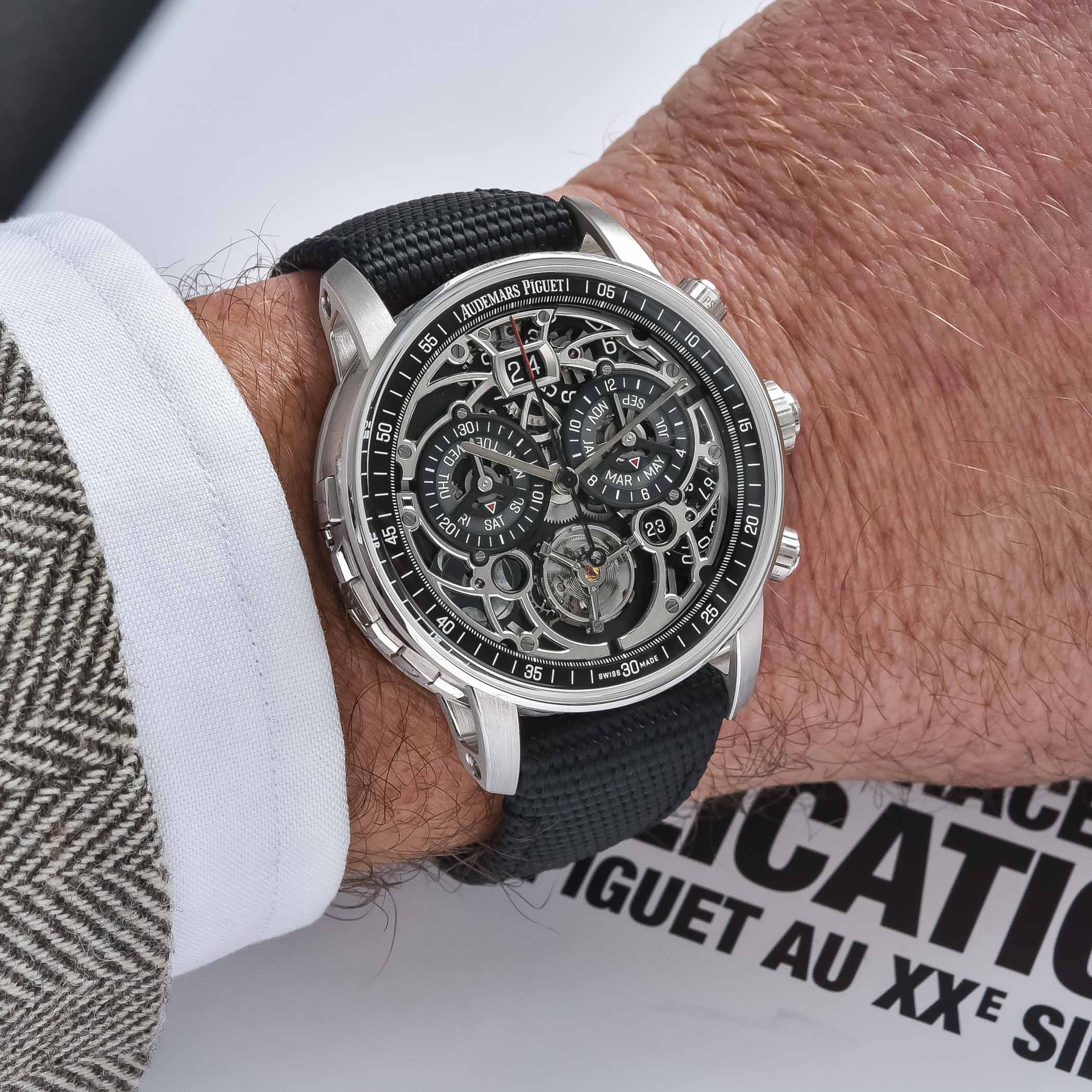
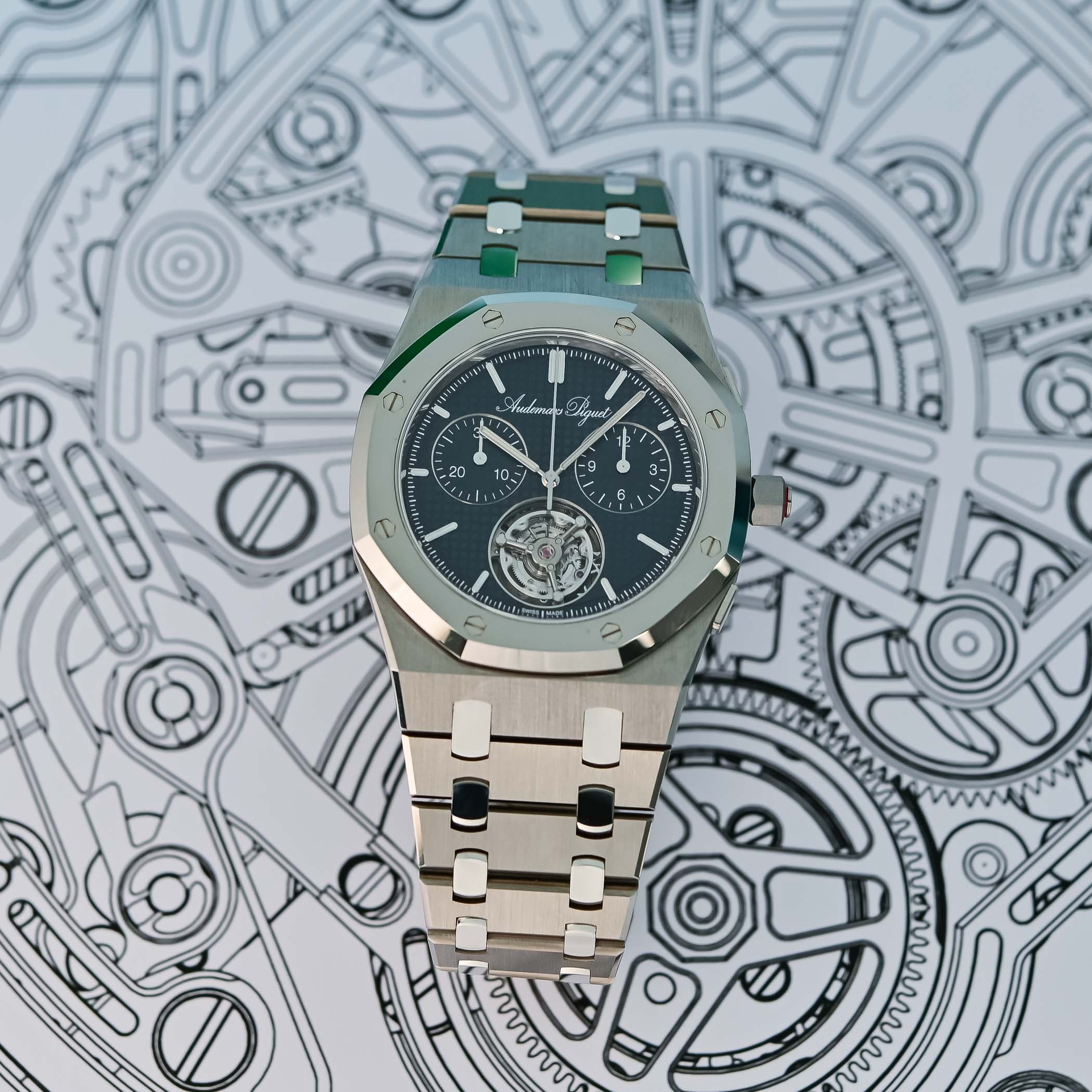
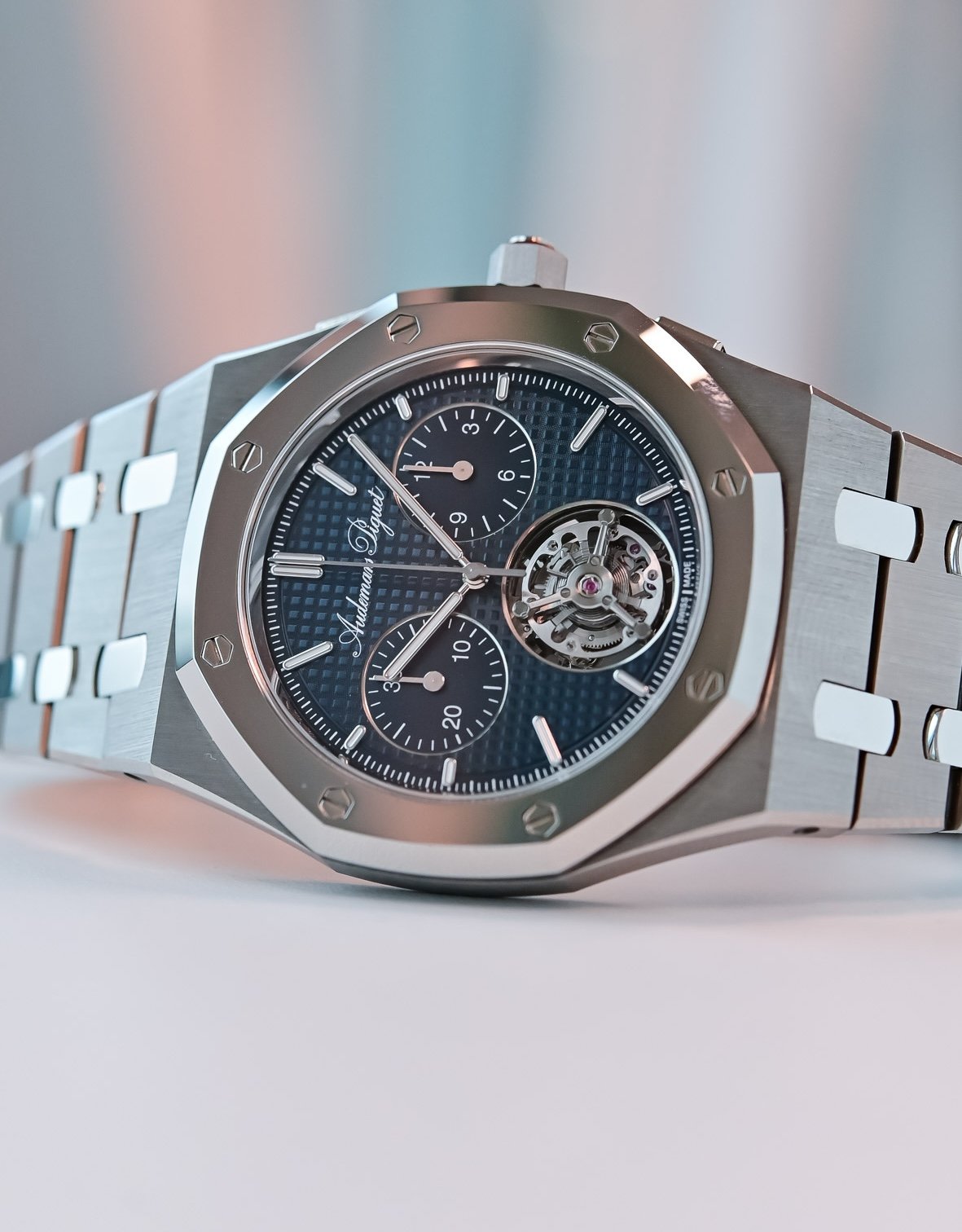


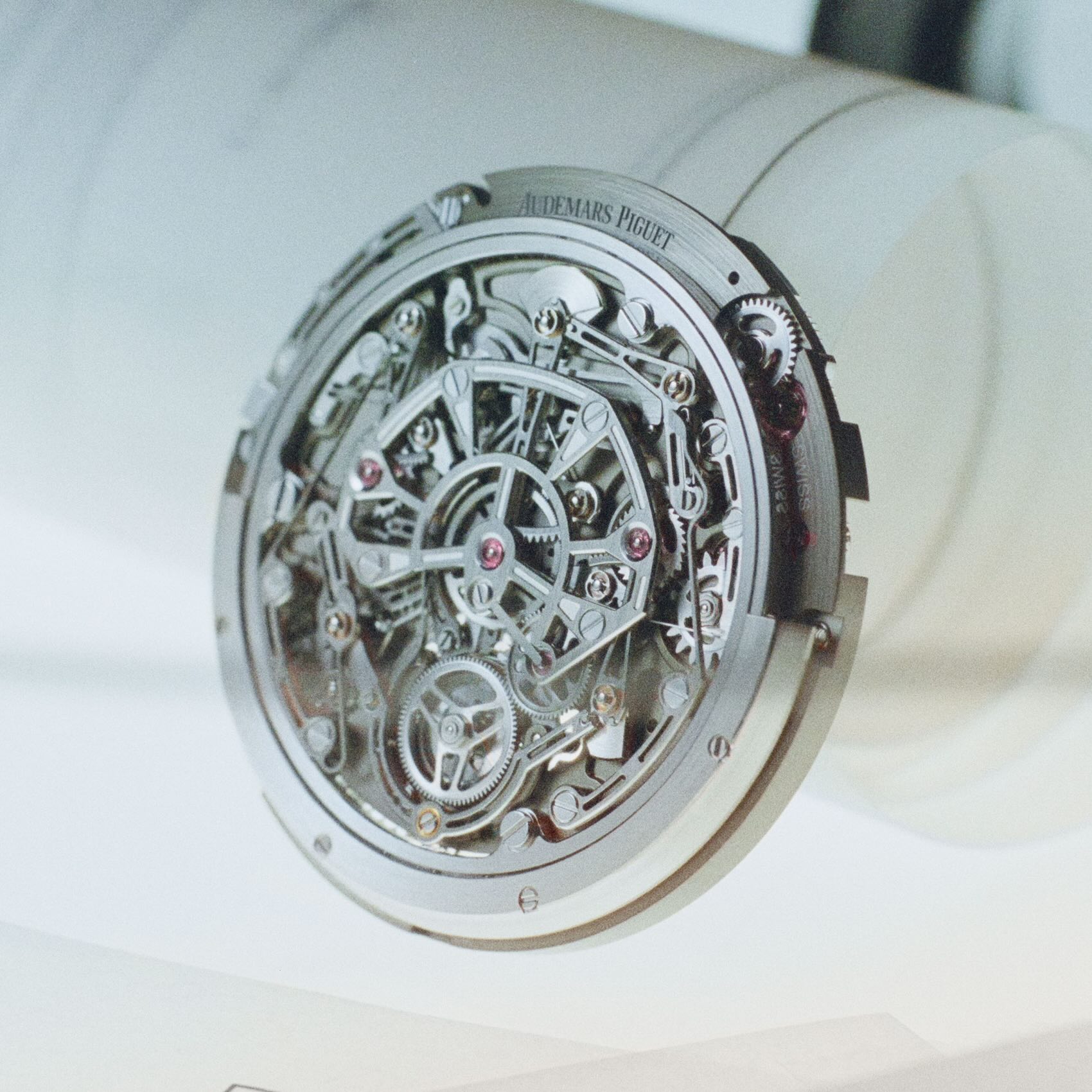
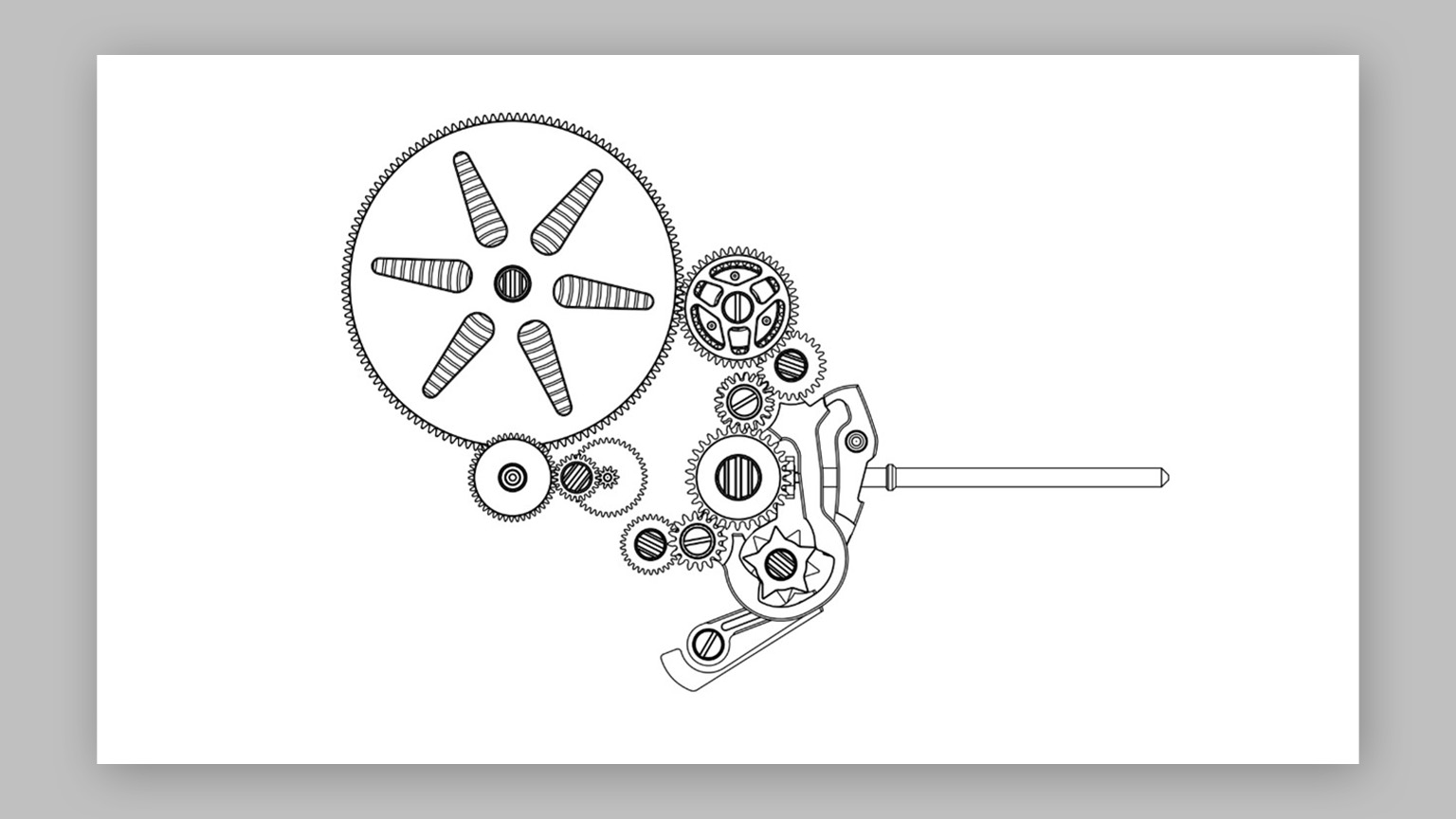
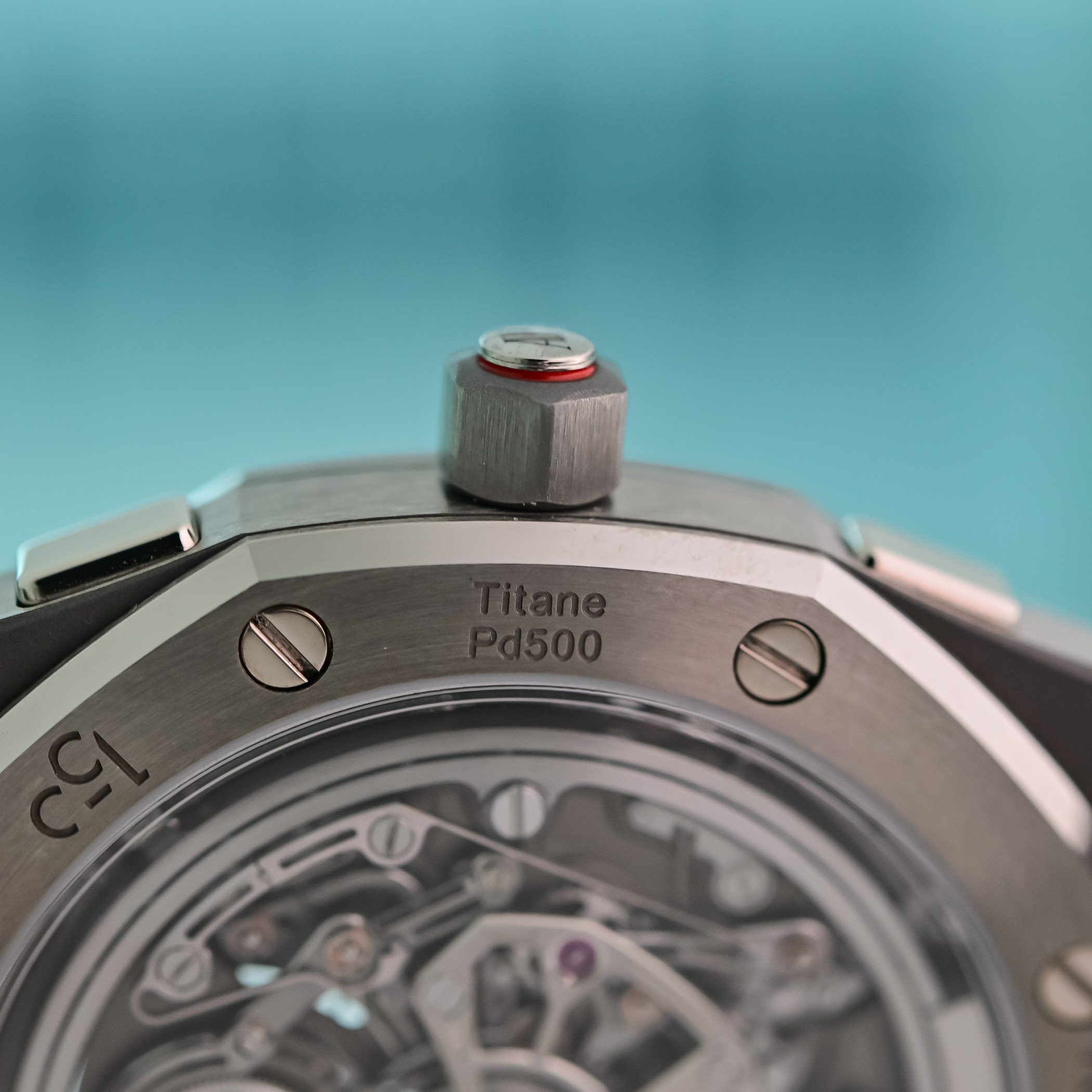
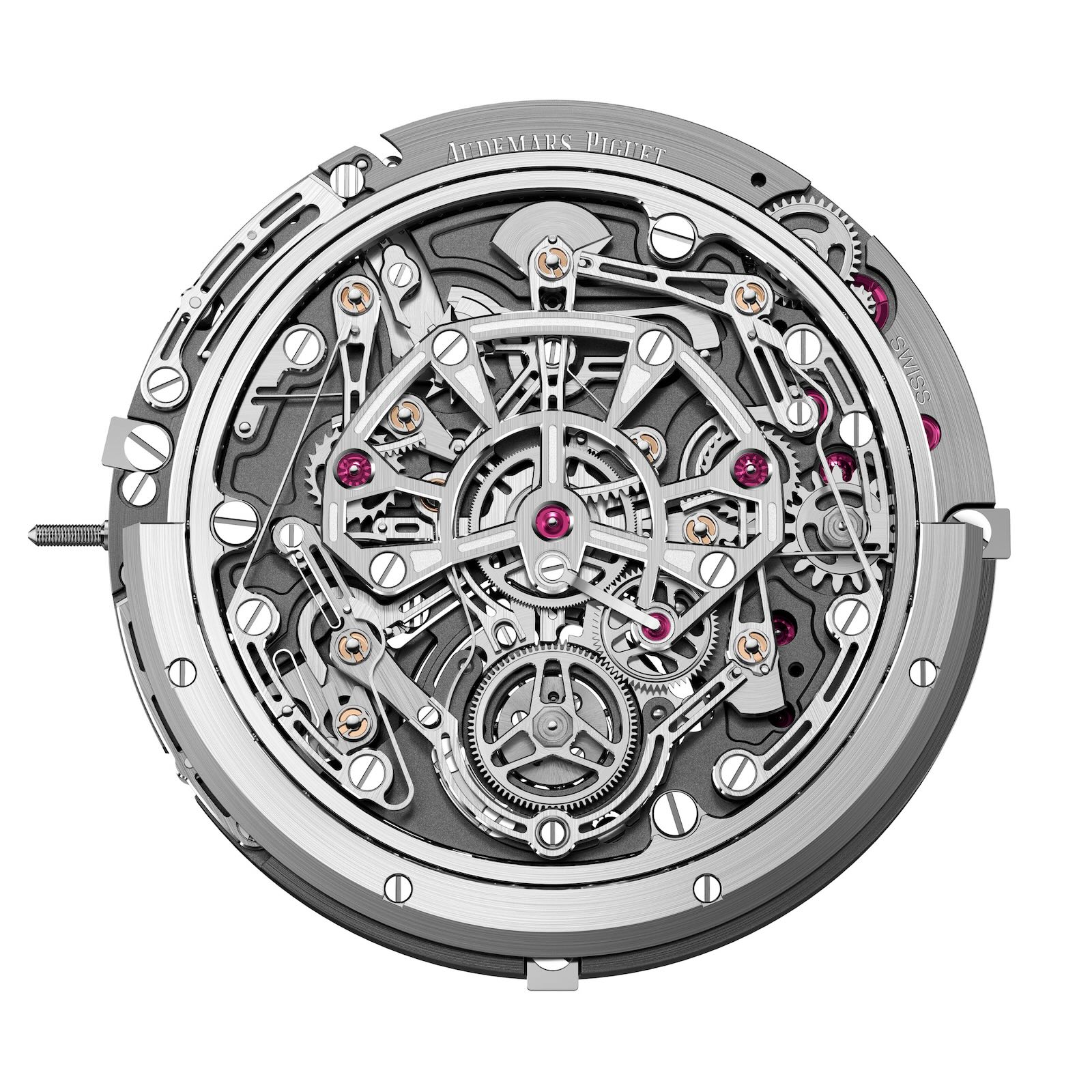
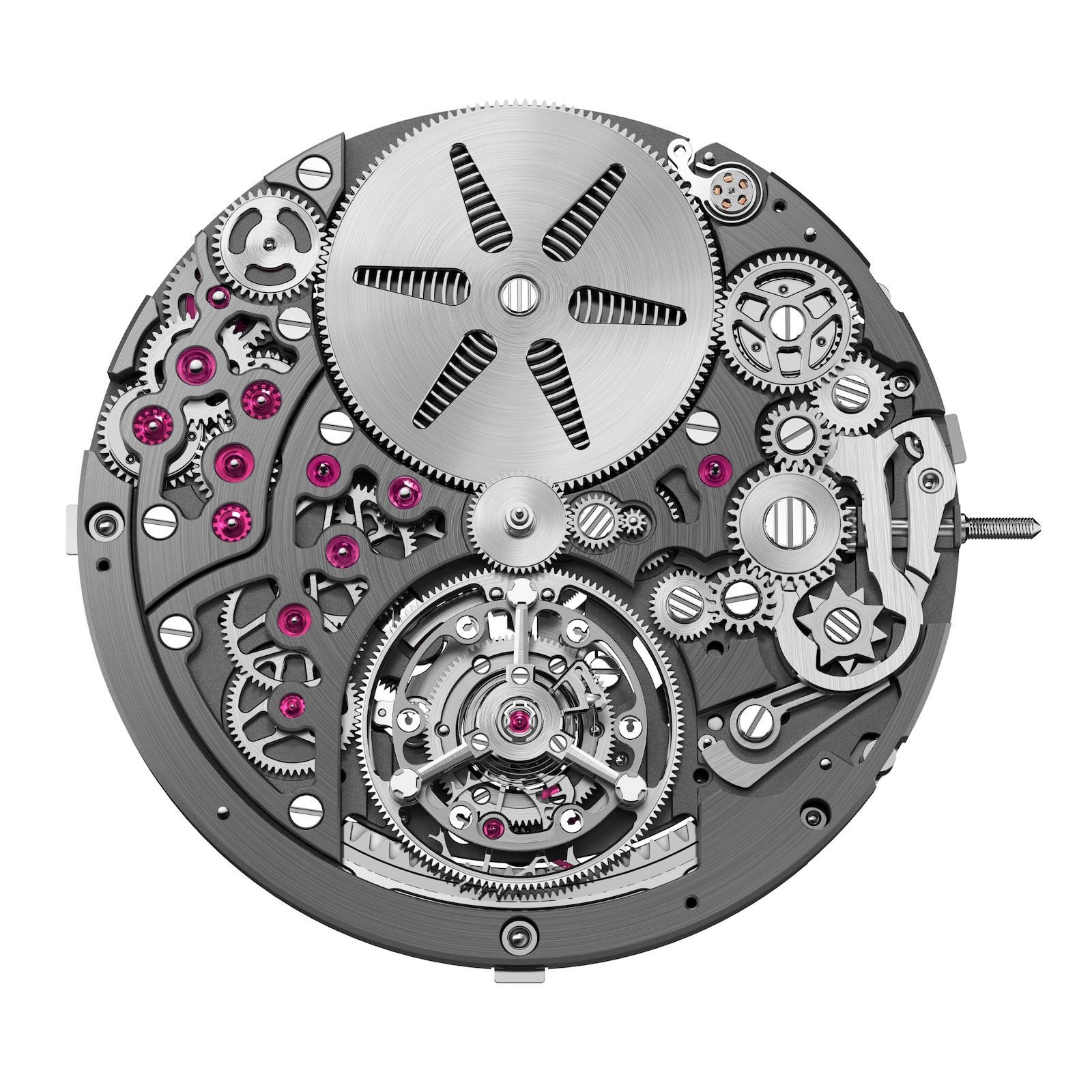
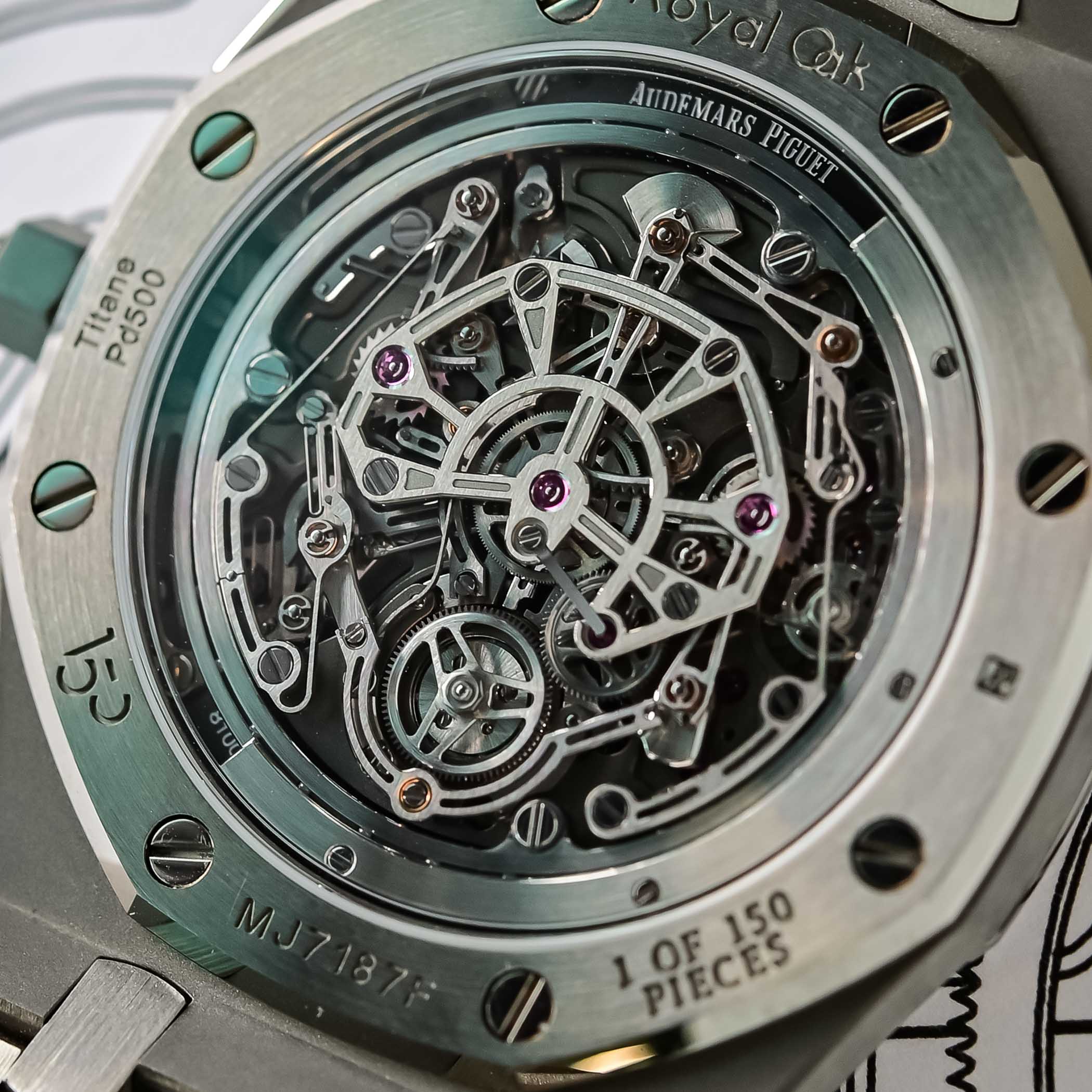
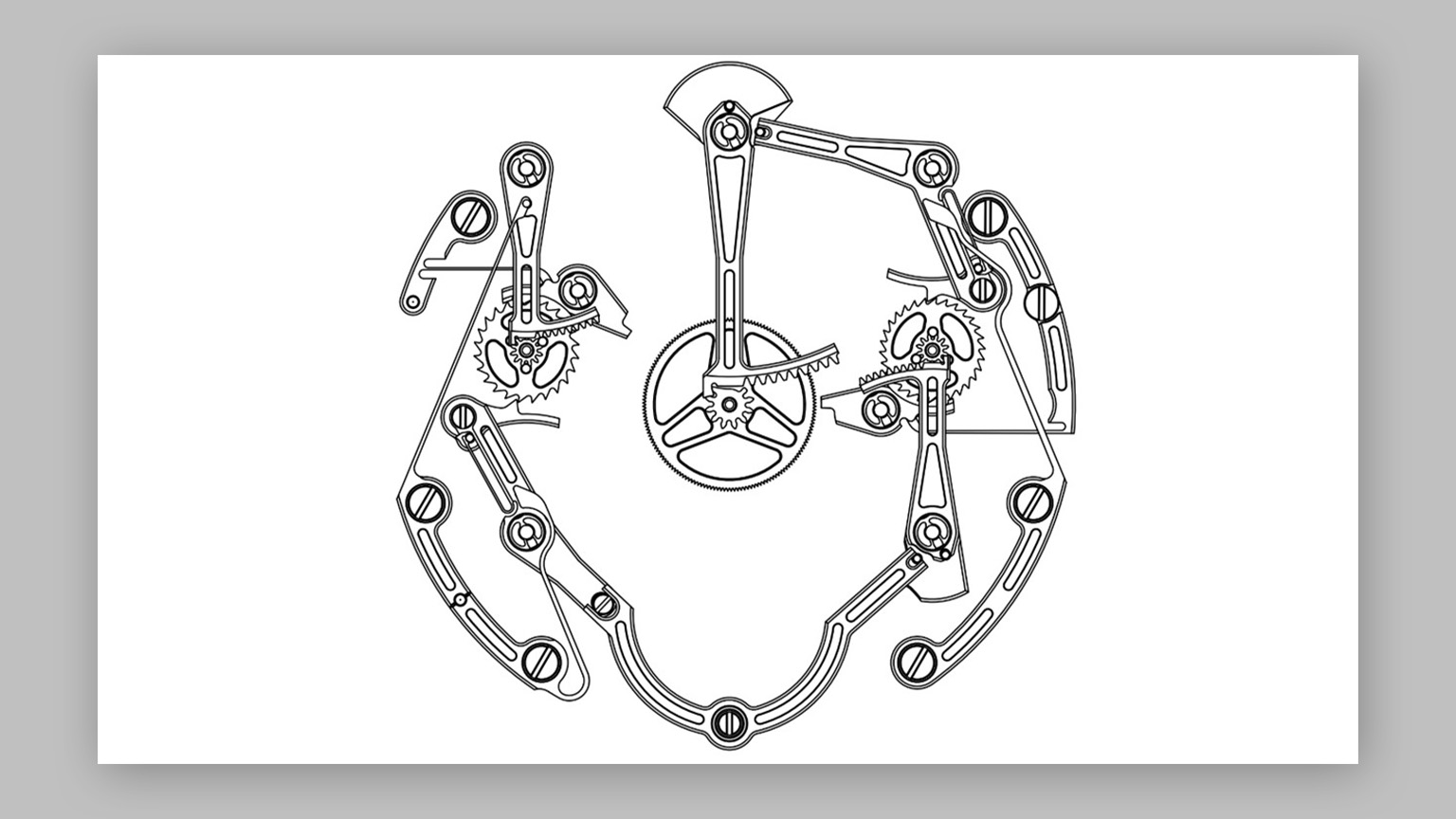

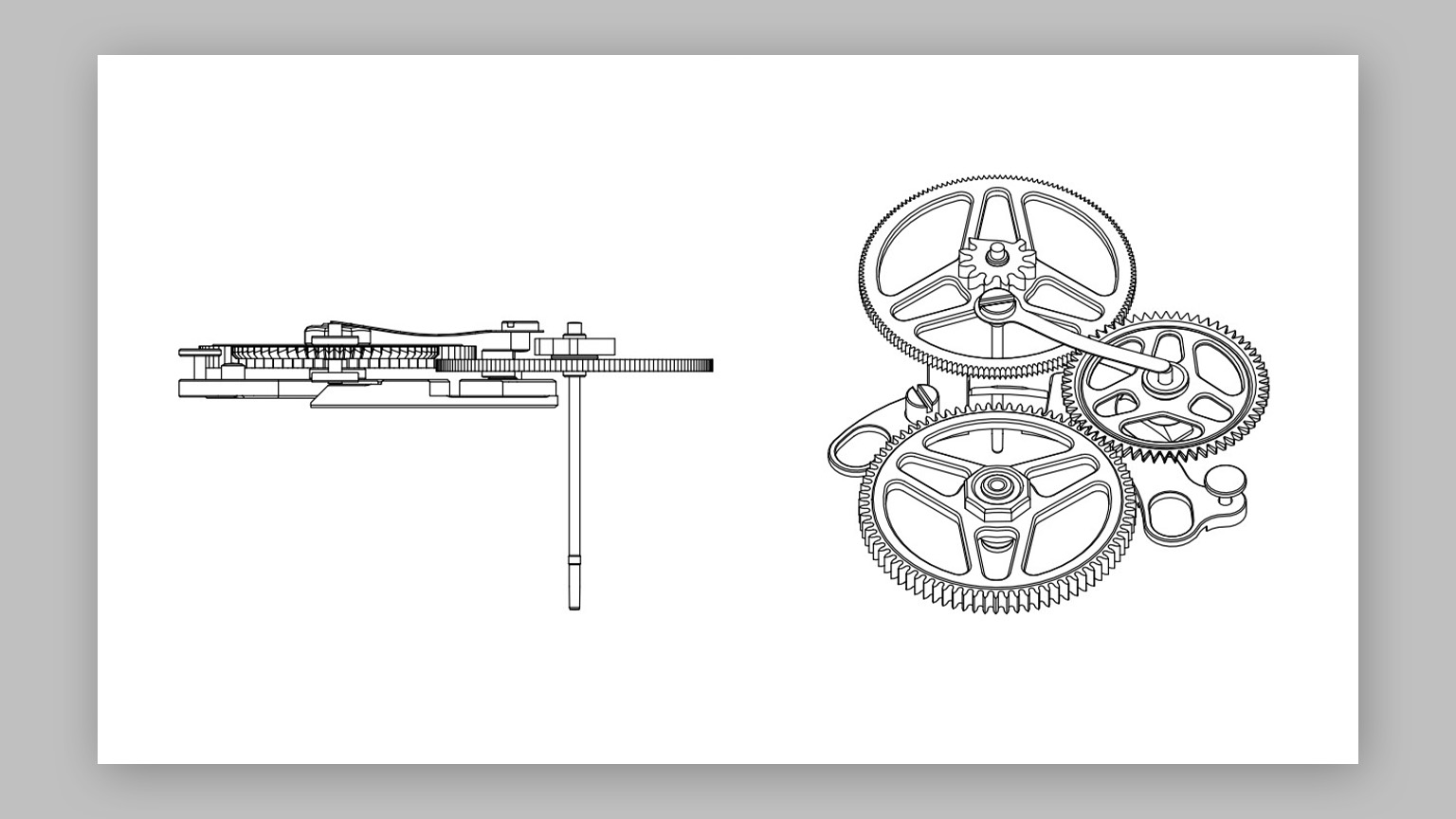


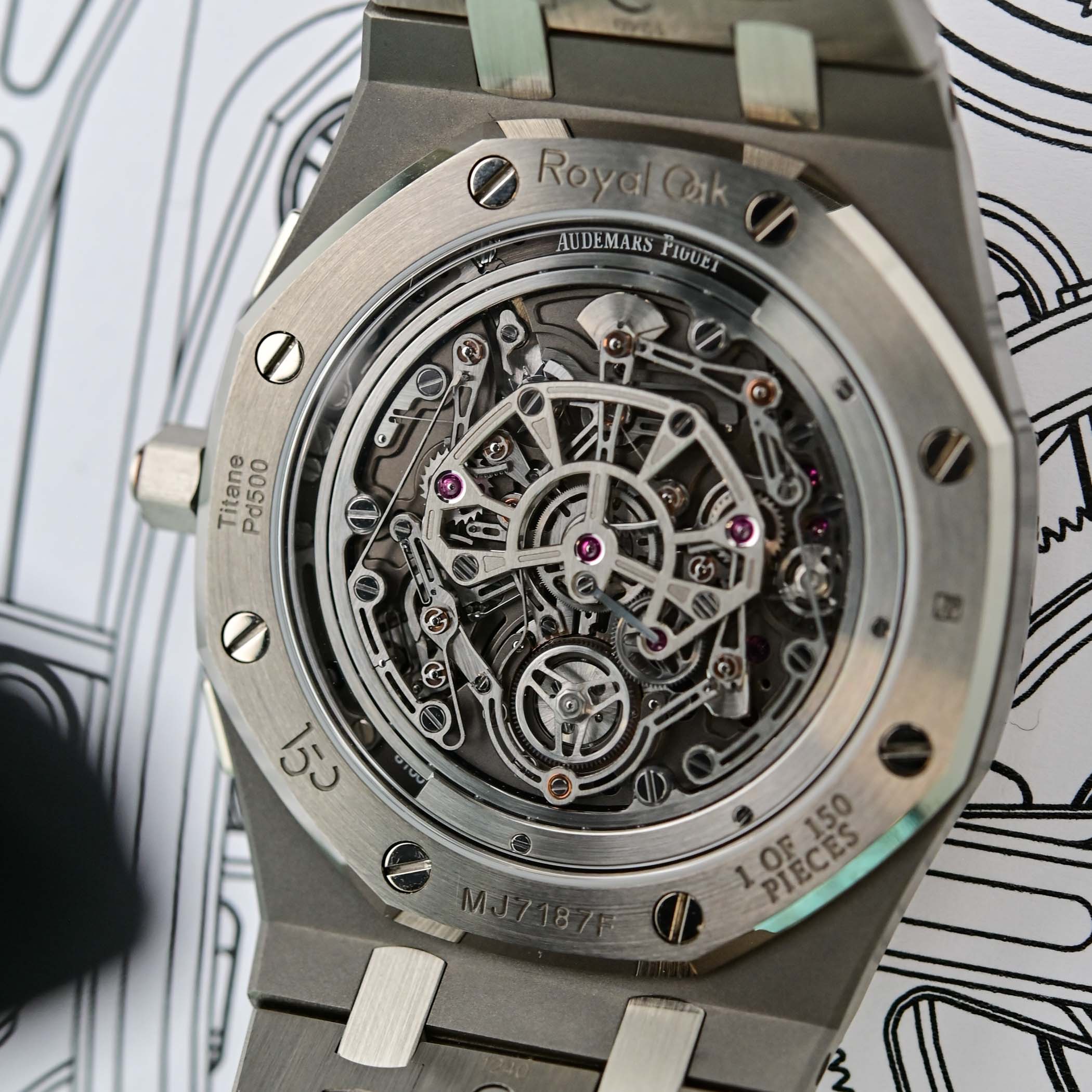

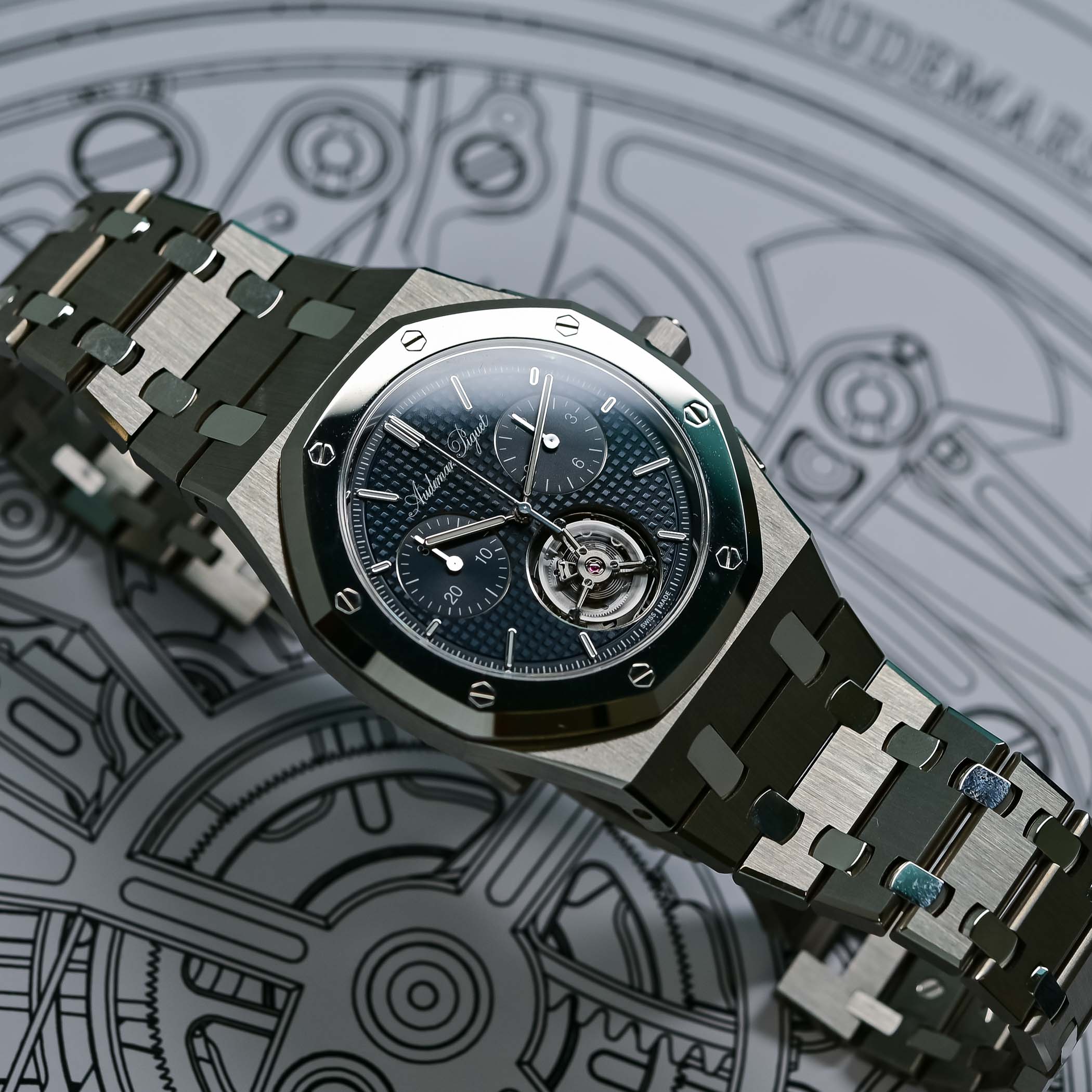
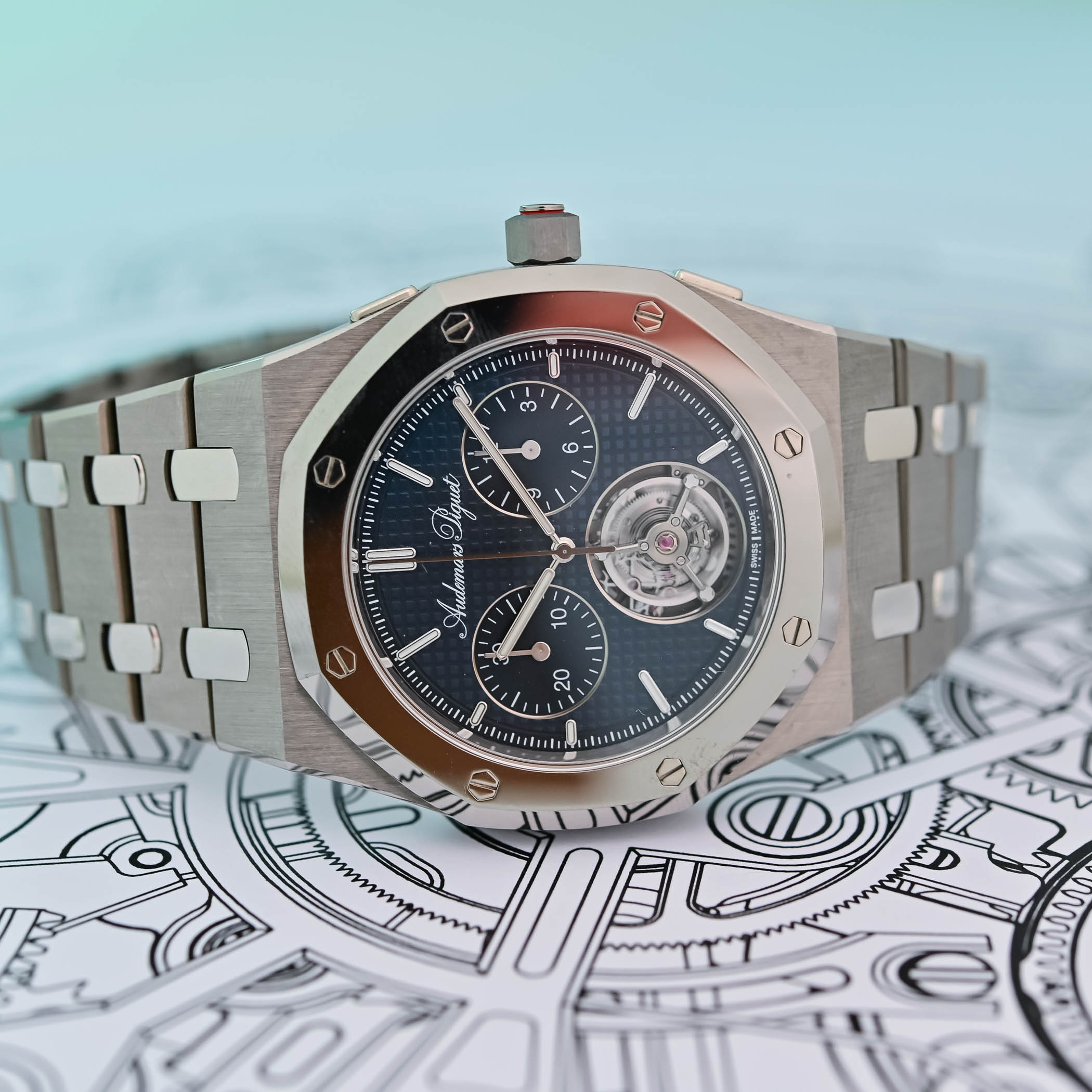


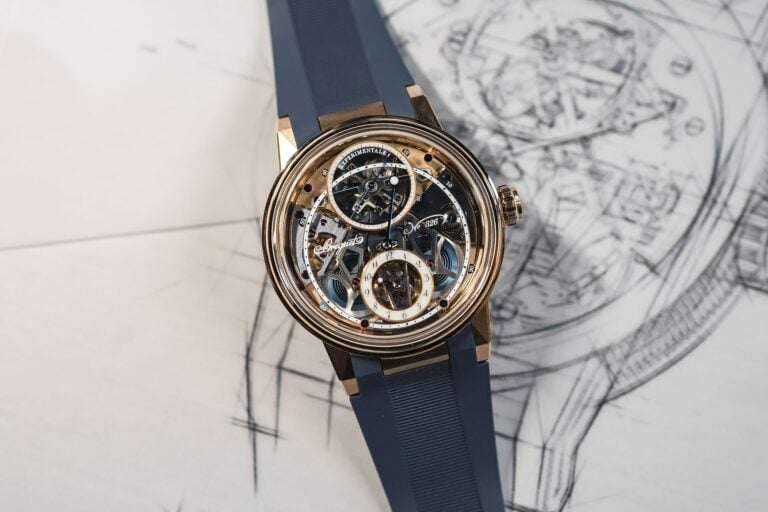
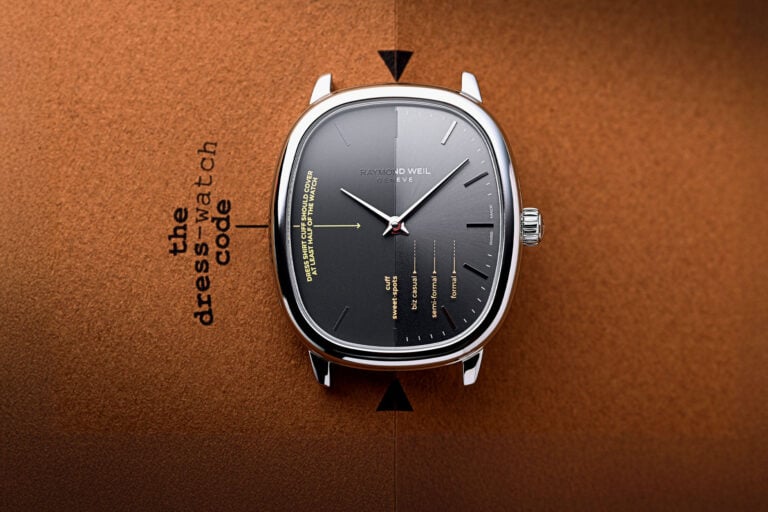
4 responses
What did they do that logo. The old font was gorgeous and complemented the sharp edges of the Royal Oak. This new one is something out Microsoft Word!
The thickness of a chronograph watch that I have ever dreamed of. Wow!
The thinnest chronograph I owned is 8mm, Blancpain Villaret 1180. This is the second monster that on par with 1180.
That looks like a very painful crown.